In Search of the Crypto-Jews of Portugal
Exploring the Lost Jewish History of the Douro River Valley
Henry Abramson, PhD

“Portugal,” explained Filipa Carretas, our local guide, “is about three things: fado, Fátima, and futebol.” Fado is the profoundly melancholy Portuguese national music, Fátima refers to a 1917 sighting of the Virgin Mary (in a town ironically named for the daughter of Muhammad), and futebol is, well, soccer. Portugal is also about a fourth, unstated element: the pervasive presence of a submerged Jewish population, vanished in the flames of the Inquisition five hundred years ago. With DNA studies indicating that 20 percent of Portuguese citizens have Jewish roots, it is not at all unusual to meet a local who did the family research and became a “Jew by surprise.” This is also Portugal.

The invisible yet palpable echo of the crypto-Jewish tradition resonates through Portugal like the far side of a conversation faintly overheard in another person’s cell phone. A rush of sibilants or an exclamation of laughter confirms the reality of the distant interlocutor, even though we do not see her before us. The history of Portugal’s crypto-Jewish community is similarly measured by absences—a mezuzah scar on a doorway, a bolt-hole for a Torah scroll hidden behind a false wall, a disappeared Juderia marked, if at all, by a 21st century plaque.
This summer I had the wonderful opportunity of joining a group of Jewish history enthusiasts in a rather luxurious exploration of the Douro River valley as a scholar-in-residence with Kosher Riverboat Cruises. Nestled between lush mountain terraces, the Douro flows from the interior of the Iberian peninsula through Spain and traverses northern Portugal before emptying into the Atlantic Ocean. Sun-kissed, the river is especially famous for its vineyards, which produce the famous Port wine (named for Porto, Portugal’s second city and home to one of its oldest Jewish communities).  Well-read in the general history of the Jews but fairly ignorant of the specifics on the ground—this was my first trip to Portugal—I assumed that my role would be to provide nightly lectures on the general history of the Jews of Spain and Portugal, leaving the more granular analysis of local sites to the competent Portuguese historians contracted to tour us on the land excursions. It soon became apparent, however, that the highly educated, academically curious passengers as well as our new Portuguese friends turned to me for responses to difficult questions of identity, belonging, and memory—subjects that stretched far beyond my training as a historian.
Well-read in the general history of the Jews but fairly ignorant of the specifics on the ground—this was my first trip to Portugal—I assumed that my role would be to provide nightly lectures on the general history of the Jews of Spain and Portugal, leaving the more granular analysis of local sites to the competent Portuguese historians contracted to tour us on the land excursions. It soon became apparent, however, that the highly educated, academically curious passengers as well as our new Portuguese friends turned to me for responses to difficult questions of identity, belonging, and memory—subjects that stretched far beyond my training as a historian.
How, for example, does one remark on the Jewishness of a given site when nothing remains? Our guides were sympathetic and forthright about the darker aspects of Portuguese-Jewish history, but were sometimes not well-equipped to navigate the emotional minefields surrounding a synagogue that was confiscated as part of the purges of the Inquisition and transformed into a church. At moments like this, David Lawrence, a Sayeret Matkal veteran who transformed his Israeli logistical skills to Kosher Riverboat Cruises, would nudge me and say, “get in there and say something Jewy.”
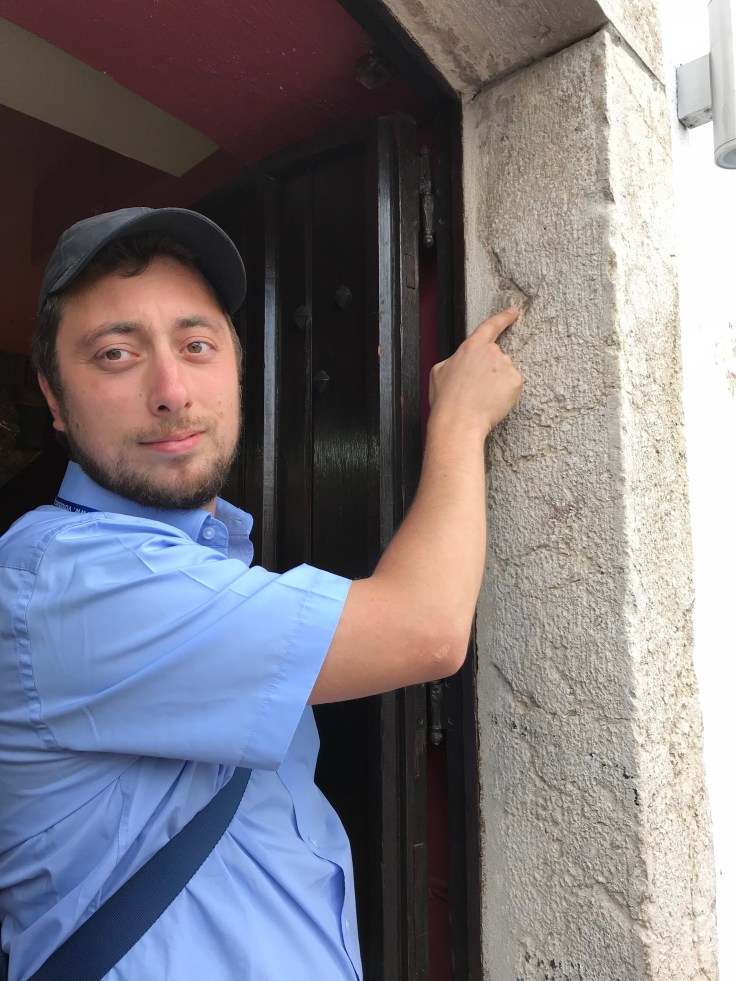
So by night we retired to the luxurious accommodations abroad the Douro Serenity and enjoyed the incredible kosher cuisine of Master Chef Malcolm Green and the informative musical programs of “Entertainer in Residence” Howie Kahn, but by day we embarked on an ethnographic expedition reminiscent of the 20th-century explorations of Eastern Europe by Sh. An-Ski.
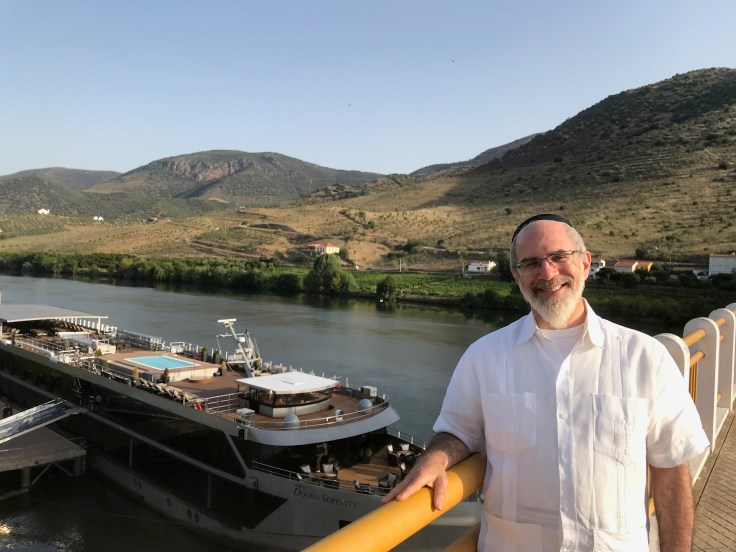

Neutral third-person descriptions morphed into more intimate, first-person accounts as confirmed Ashkenazim began to say “when we were expelled from Spain” and our Portuguese hosts spoke apologetically of “when we persecuted you.” This was, to paraphrase the Skipper, no longer just a “three-hour cruise.”

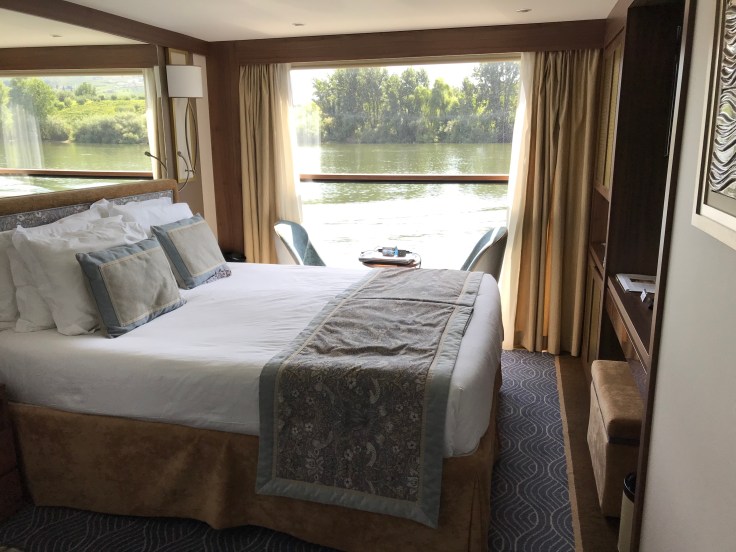
Salamanca
Portugal boasts an ancient Jewish settlement that reached a population of some 30,000 by the end of the fifteenth century. Perched on the edge of the Iberian peninsula, Portugal earned a reputation for tolerance that had long attracted Jews fleeing Spanish oppression, including Don Isaac Abravanel’s grandfather Shmuel, who fled the 1391 riots and forced baptism to reclaim his Jewish faith in Portugal. It is fitting, therefore, that the first major stop of our river cruise began in Salamanca, a University town whose Jewish population was obliterated by the Spanish Inquisition and the 1492 Edict of Expulsion.
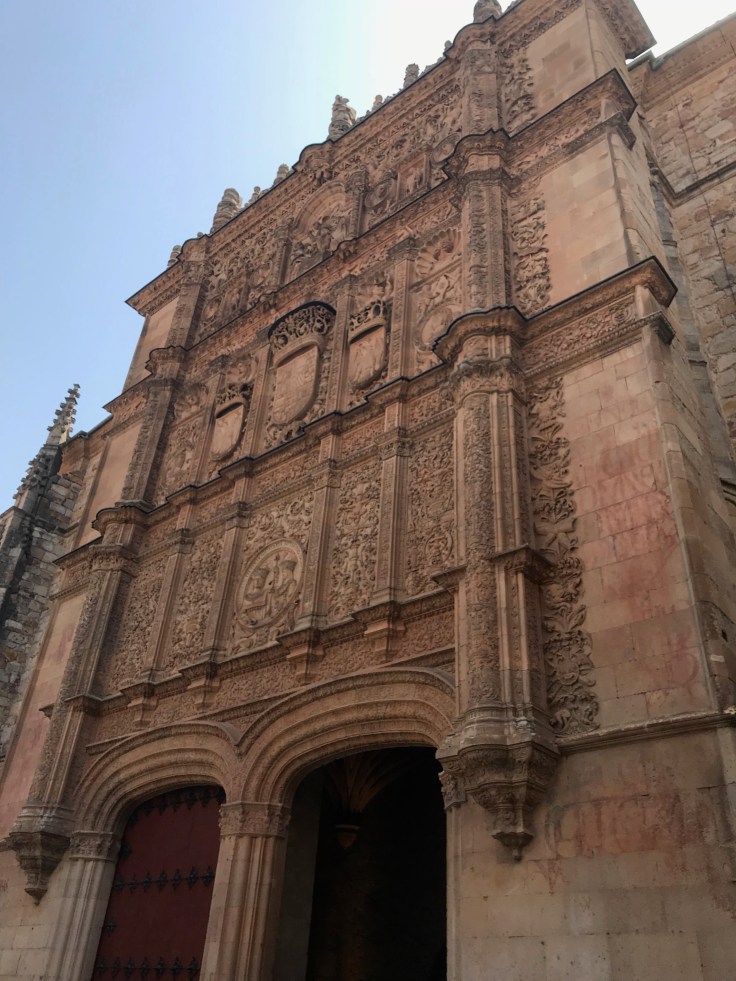
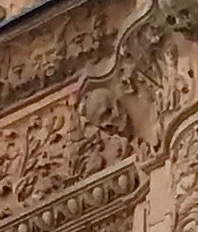
The Jewish presence in Salamanca is well-documented in ecclesiastical and municipal records from the 12th century on—first as a series of privileges conferred upon them by rulers seeking the economic advantage of Jewish merchants, later as their rights were eroded and properties were confiscated, including King Juan II’s 1413 dedication of Salamanca’s Beit Midrash and its surrounding courtyards as dormitories for students of the University. Traces of the community remain, sometimes as echoes or mirror images of their disappearance—a quiet street called Vera Cruz, for example, marks the street near a synagogue where Jews once prayed. In 1411 the fiery Dominican Vincente Ferrer (“the Angel of Judgement”), fueled by religious zeal, burst into the synagogue to proselytize the terrified minyan. In the midst of his impromptu sermon, Ferrer claimed to have a vision of crosses magically appearing on the prayer shawls of the Jews, which he interpreted as their secret desire to convert to the faith of the “true cross”—hence Vera Cruz. A mass baptism followed, as it did wherever Ferrer roused the population with zealous, sometimes violent, religious fervor. Ferrer eventually received sainthood from the grateful Church.
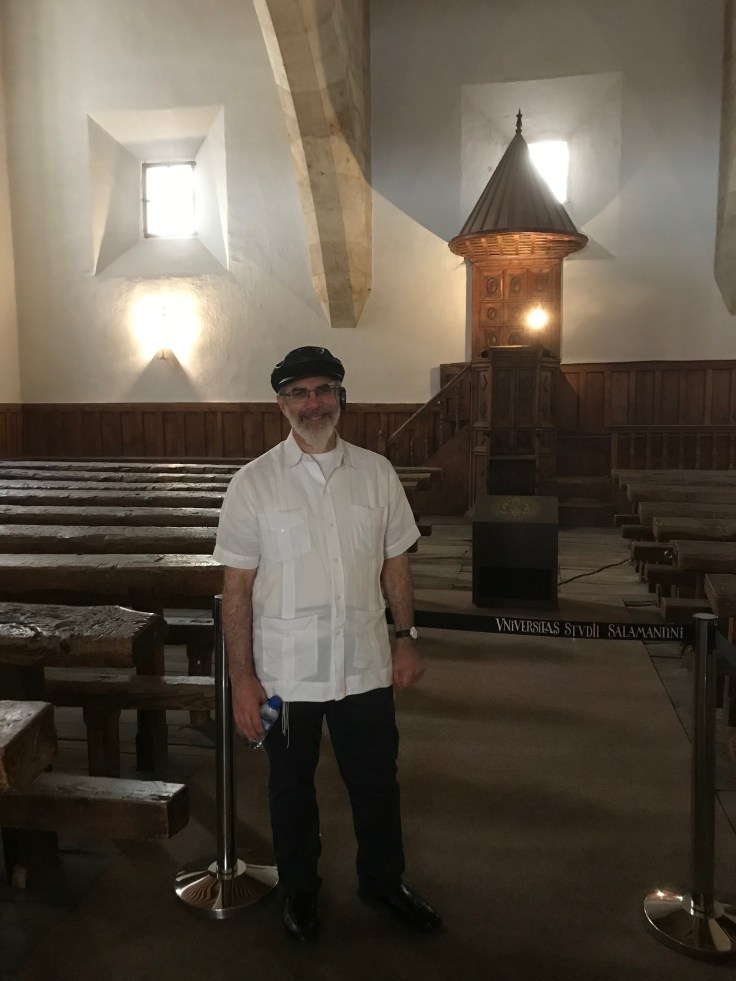
The forcibly baptized Spanish Jews (designated “New Christians,” “conversos,” or the derogatory “Marranos”), maintained their connections with the traditional Jewish community throughout the fifteenth century. Living openly as Christians yet secretly as Jews (hence the term “crypto-Jews,” meaning “hidden Jews”), many continued to attend religious classes and services in the Jewish community, observed the dietary laws and the Sabbath, and married into other crypto-Jewish families. In 1478 the Spanish Inquisition was therefore instituted to root out Judaizing tendencies in this New Christian population. Led by the sadistic Tomas de Torquemada, the Inquisition used torture to exact “confessions” from conversos, describing their secret Jewish activities and, more significantly, naming other New Christians whose faith was less than genuine.
The purge-like atmosphere engulfed all Spanish territories under Ferdinand and Isabella, a terror that continued for generations until it was finally abolished in the early nineteenth century. Swept up in its clutches were many prominent theologians and scholars, including the beloved lecturer Luis de Leon of University of Salamanca (1527-1591), whose credentials as an Augustinian Friar did not expunge the taint of his Jewish ancestry—that, and the fact that he dared to study Hebrew Scriptures in the original. Denounced as a crypto-Jew, he was imprisoned and interrogated. Returning to his classroom after four years of rough treatment, he famously began his class with the words, “as we were saying.”
Although initially concentrating on crypto-Jews, the Inquisition eventually directed its attention to the unbaptized Jewish community as well. Torquemada argued before the royal court that the stubborn persistence of Jewish practice was a consequence of the continued fraternization between conversos and the Jewish community. Historians argue about why Ferdinand and Isabella ultimately agreed to Torquemada’s plan to expel the Jews in 1492–was it religious zeal or greed?—but nothing could stop the throne from forcing its remaining Jews to choose conversion or exile in the Hebrew month of Av of that fateful year. Thousands of Salamancan Jews were forced from their homes and, like the first of Genie Milgrom’s fifteen crypto-Jewish grandmothers, followed the Douro River westward as it flowed to the Portuguese border and beyond. We followed their trail.
Belmonte
In a break with Portugal’s history of relative religious tolerance, King João II initially refused to admit the estimated 100,000 Jewish refugees massing at his borders. Intensive petitioning finally moved the King to grant a six-month transit visa to 600 prominent families, at the usurious cost of six cruzados per person (approximately $20,000 US in contemporary currency). Despairing, many Jews chose to turn back, accept Christianity, and risk the depredations of the Inquisition. Others entered Portugal illegally, hoping to blend into the local population. Both João and his successor Manuel I imposed harsh antisemitic decrees aimed at forcing the Jews to accept baptism, including the kidnapping of Jewish children and exiling them to São Tomé, a recently acquired island off the coast of west Africa—according to the historian Samuel Usque, himself a Jewish refugee from Portuguese persecution, nearly 2,000 of the 2,500 children abandoned on São Tomé died there, perhaps eaten by huge indigenous lizards. By 1497, however, the Portuguese persecution reached its nadir with the mass conversion of all remaining Jews, both Portuguese and Spanish refugees, such that the entire Iberian peninsula was rendered Judenrein: free of Jews.
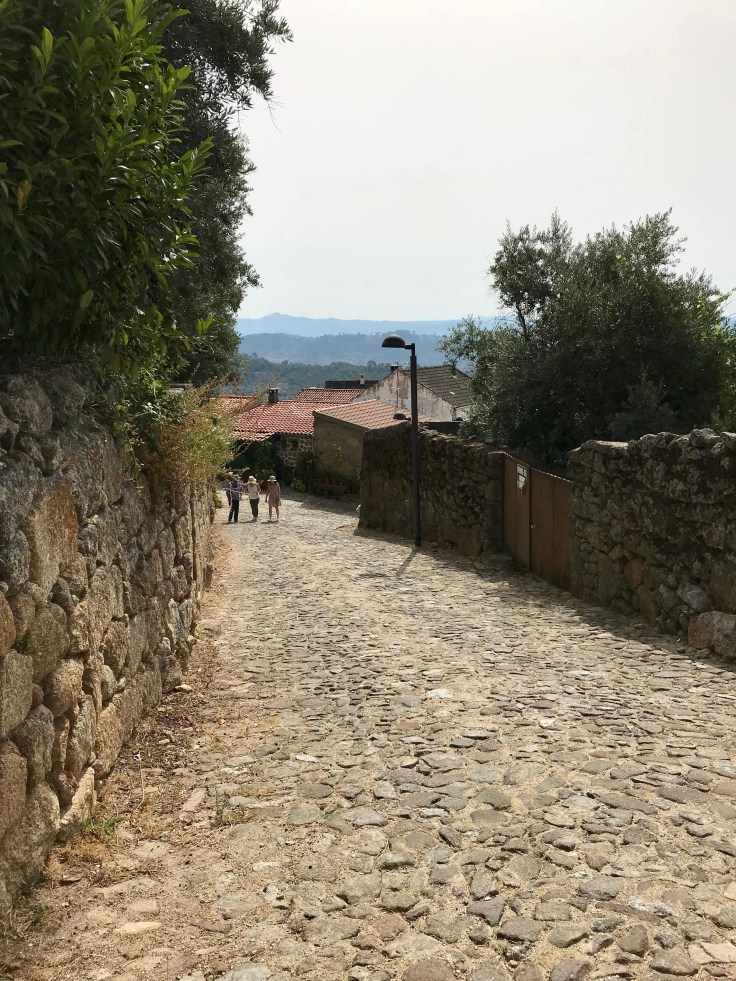
Amazingly, they persisted. Traces of crypto-Jewish activity over the following centuries are recorded in Inquisition trial records and memoirs of those who managed to emigrate to safe havens like Amsterdam. It is difficult to comprehend the incredible stamina of these crypto-Jews, many of whom only learned their secret Jewish backgrounds upon reaching adulthood. Nevertheless, secret traditions continued through the centuries, right up to the 20th century, when a Polish Jewish civil engineer named Samuel Schwarz working in the Douro region heard rumors of a Portuguese community that practiced Judaism in a tiny village called Belmonte (the birthplace, incidentally, of Luis de Leon). Like the proverbial Japanese soldier stranded on a tropical island who was unaware that the war had ended, Schwarz reported that the Belmonte conversos were skeptical that he was even Jewish. Only when he recited the familiar words of the Sh’ma prayer did they accept the fact that the Inquisition had not reached every living Jew.
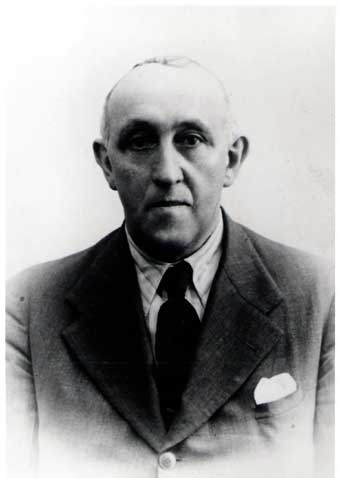
Belmonte became a destination for ethnographers and historians seeking to document the history of a secret community of crypto-Jews who risked their lives to continuously maintain their identity for half a millennium. A synagogue was dedicated in 1997, complete with a modern mikvah, and the crypto-Jews of Belmonte slowly began to integrate themselves back into the world Jewish community, with a large number of the youth emigrating to Israel. Their heroic tenacity was commemorated with a modern museum that told their story, largely through ritual artifacts borrowed from countries where Judaism was freely practiced (possession of ordinary objects like Jewish books, kiddush cups or Chanukah candelabras were absolute contraband under the Portuguese Inquisition). Nevertheless, even these markers of identity tell the story well—skeleton keys representing the Spanish-Jewish custom of cherishing the possibility of an eventual return to their homeland, and covered lanterns that obscured the glow of Sabbath candles from inquisitive passers-by.



I was especially moved by the description of a local women’s ritual—indeed, much of the faith of Belmonte’s Jews was preserved specifically by women—that I recognized from studies of 17th and 18th century Eastern European Jewish women. The crypto-Jewish women of Belmonte would utter special prayers over the preparation of wicks, calling them “prayer braids” before dipping them in wax to make homemade Sabbath candles. Dr. Chava Weissler has discovered a similar practice in the shtetls of Eastern Europe, where Jewish women would visit the graves of ancestors in the month of Elul and measure their perimeters with cotton that would be used to make the wicks for Sabbath candles throughout the year. This beautiful custom, lost to modern Jewish women, not only united the living and the dead—it also united the Sephardic diaspora with Ashkenazic practice. Is it possible that Tevye’s daughters received this ritual from Sephardic refugees?

Lamego

In an environment where every trace of Jewish civilization was intentionally wiped out and covered over—both by the Inquisition and later by the crypto-Jews themselves, fearing discovery—it was sometimes challenging to describe the civilization that once flourished in the Iberian peninsula without physical artifacts like synagogues, Torah scrolls and the like. Evidence of Jewish settlement was often occulted, attenuated, and disguised, as if reserved for initiates only. Lamego was a perfect case in point.
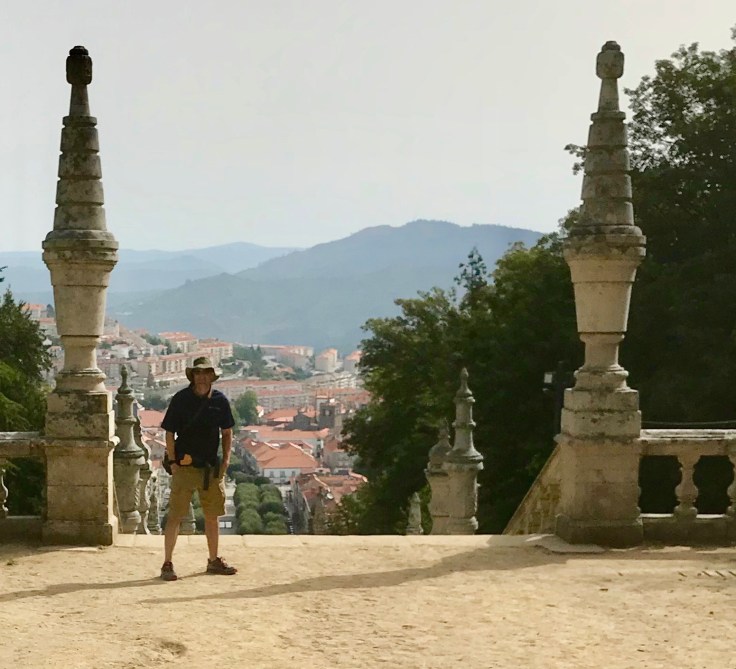
Graced by a 12th-century cathedral crowning a magnificent stone staircase (we watched two local penitents painfully climb the 686 steps on their knees, a feat that makes me grateful for fasting on Yom Kippur), the Baroque era renovations feature statues of Jewish heroes from the Hebrew scriptures and classically Portuguese blue ceramic outdoor tiles with subtle nods to Mary’s yiddishe mishpoche.


Even after five hundred years’ absence, traces of Jewish life in Portugal were everywhere. That church in the old Jewish neighborhood with a strange separate entrance to a second floor gallery—could that have once been a synagogue with a women’s balcony? The tablet-shaped mason’s marks on the medieval public cistern—a sign of a Jewish or crypto-Jewish stone worker? Amazingly, much of the local research is in its preliminary stages.
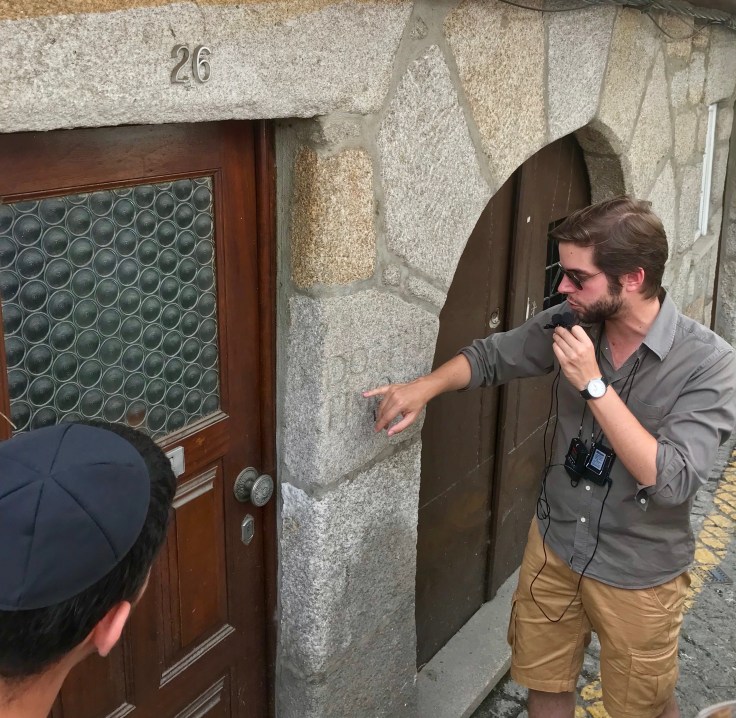

Porto
After Lisbon, Porto is Portugal’s second city, home to one of the oldest Jewish communities in the country—so much so that the common name Rappoport is derived from the phrase “Rabbi of Porto” (although this could be a reference to an Italian city of the same name). Jews favored this northern city at the mouth of the Douro River because of its easy access to Atlantic markets, especially England.

On an architectural level, the Juderia of Porto is well-preserved, albeit rededicated to Christian purposes with the installation of monasteries and other ecclesiastical and secular facilities. One site in particular stands out—a nondescript white building houses a seniors center named, entirely without irony, in honor of “Our Lady of Victory.” Passing through a narrow corridor to the back of the building, one enters a pleasant airy space, used as a dining room with about ten small tables set for four seniors each. A modern rendition of the Last Supper decorates the southern wall, where a door leads onto a quiet patio overrun with gorgeous purple flowers and a steep staircase leading to an alley below.
Renovations to the dining room in 2013 revealed that hidden behind the eastern wall was an Aron Kodesh, carved directly into the stonework separating the building from its neighbor. Two compartments, a square space topped by a slightly larger arched tablet-shaped opening, with space for approximately six small Torah scrolls. Combined with sixteenth century testimony from Immanuel Aboab, a native of Porto, we know that this building once operated as a secret synagogue for crypto-Jews hiding from the Portuguese Inquisition. Placing my hand on the cool stonework of the Aron Kodesh—a gesture I have repeated many times in synagogue services—I felt a frisson of connection with my Sephardic brethren, an electric sense of solidarity across the centuries and an abiding sense of the eternity of the Jewish people. I was reminded of the anonymous carving found in the barracks of a Nazi concentration camp, actually a verse from Samuel: netsah Yisrael lo ye-shaker, which in this context is best translated as “the survival of the Jewish people will not be denied.”
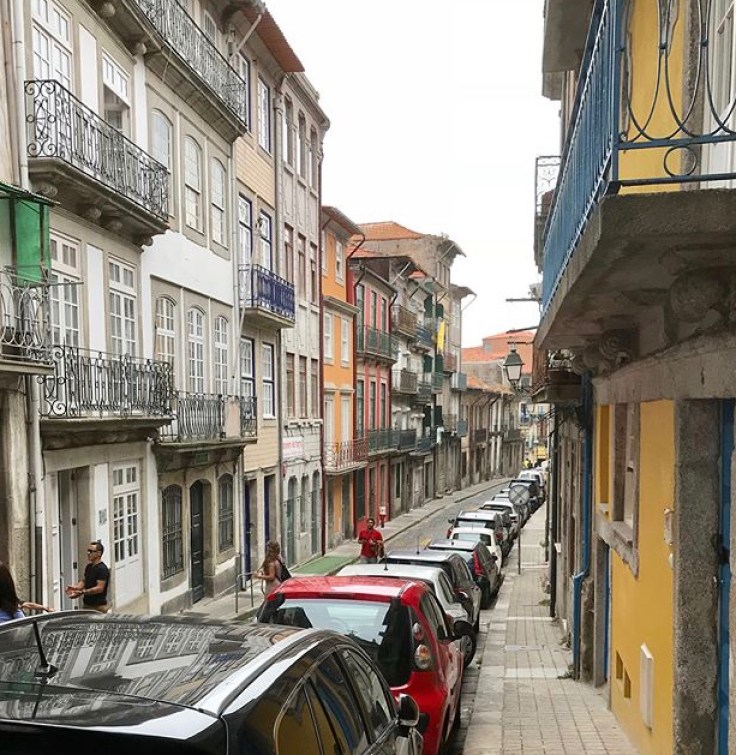


Indeed, the proof of Jewish survival in Portugal finds expression in the Mekor Hayim-Kadoorie synagogue. The congregation, which is heavily dependent on Israeli business people and travelers, serves as a gathering point for descendants of crypto-Jews, slowly discovering their Jewish origins and looking for a place to reconnect to their past. The interior of the synagogue, built in the mid-20th century with strong Art Deco influence, features well-chosen scriptural verses that seem ideally suited for this unique gathering of Jews. How would a young man, raised as a Catholic like his fathers yet contemplating a return to his pre-Expulsion roots, react to the verse surrounding the women’s balcony (Psalms 145:18) “God is close to all who call out to Him, to all who call out to God in truth”? Or for those who despaired that Jews and Judaism were completely destroyed in Portugal, would they read the verse that arches over the Aron Kodesh (Isaiah 43:11) as a subtle dig at their erstwhile Catholic faith: “I, only I, am God, and apart from me there is no savior.”
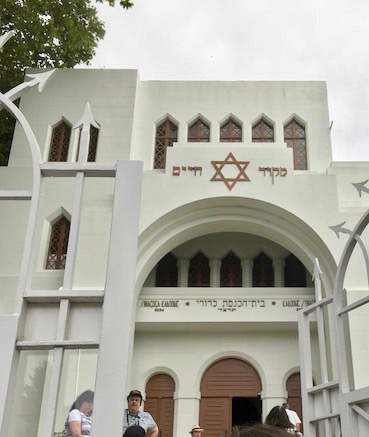
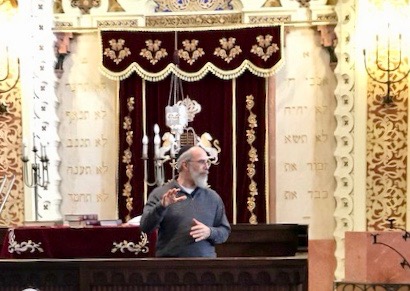
Coimbra
Leaving the Douro River valley, we headed south to the medieval town of Coimbra, home to one of Europe’s oldest Universities, established in 1290. The extent of Jewish settlement in Coimbra is increasingly evident—the city was possibly home to Jewish refugees who suffered expulsion from England in the same year of the University’s founding, as the city’s academic and mercantile foundations would have been an attractive destination. Indeed, repairs to the sewage system in the main shopping district—a section of the city that once housed the Jewish quarter—revealed a network of underground mikvaot that stretched back some seven hundred years (ironically, this discovery was made in 2013, the same year of the discovery of the hidden Aron Kodesh in Porto).

Unfortunately, the presence of a large number of theologians associated with one of the initial faculties of the University meant that Coimbra served as one of the four seats of the Inquisition in Portugal. An estimated 11,000 suspected crypto-Jews were tried in Coimbra, many of them sentenced to public burnings in the town square. Like many sites in Portugal, the cheerful, well-organized square gleams with enthusiasm under the sunny blue skies, as if to deny the horrors that were once perpetrated there.

The sense of incongruity is preserved in the beautiful library, called “the Jewel of the University,” in which rare books are exposed to and unfiltered sunlight and remain unprotected by modern climate control—yet the regular parade of visitors are admonished not to take photographs on their smart phones for fear of damaging the priceless manuscripts (including, for example, original commentaries on the Bible by Don Isaac Abravanel, a native of Portugal).
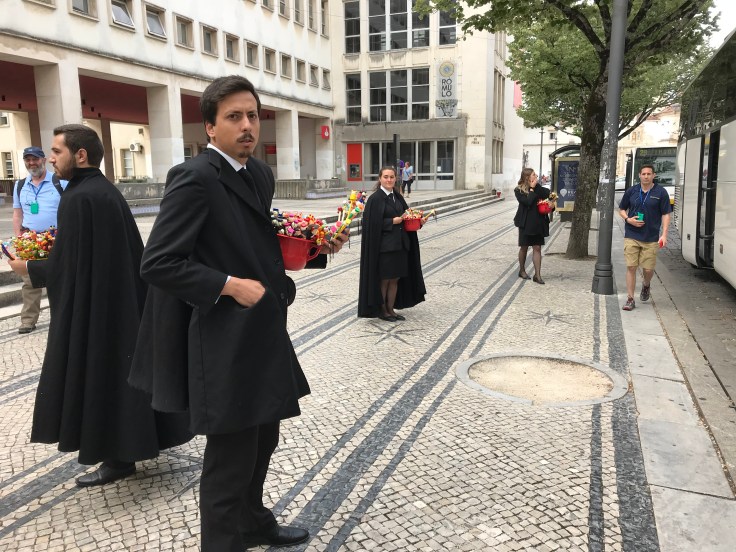
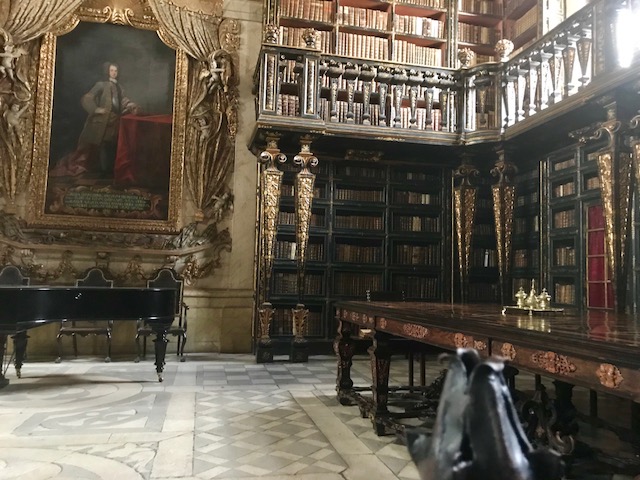
Óbidos
A priceless Portuguese gem is the remarkably well-preserved market town of Óbidos, home to an annual festival medieval culture.

Like most economic centers, it possessed a Jewish quarter, ironically located close to the modest cathedral. Our local guides pointed us to a building that stood on the site of a pre-Inquisition synagogue. Renovated in the 18th century after an earthquake damaged major structures (including the defensive wall that encircles Óbidos), the guides made the rather amazing claim that the otherwise unremarkable building dated from the seventh century, a holdover from the pre-Muslim Visigothic era in Portugal.
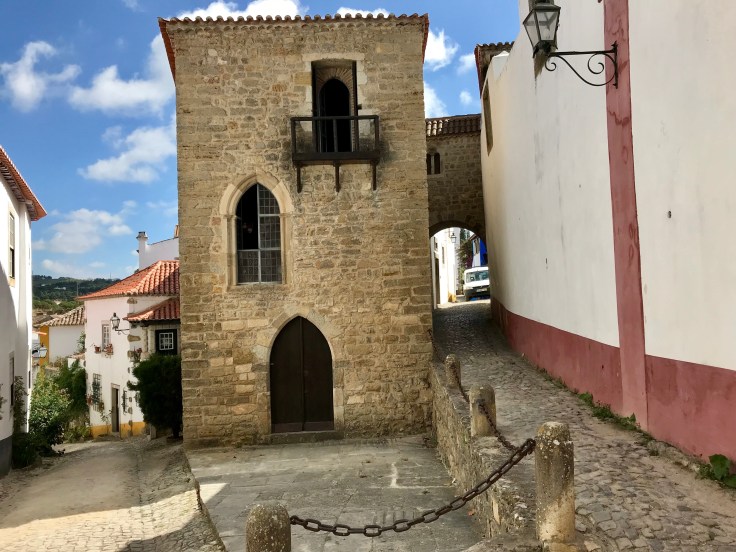
Is this possible? If the building really does date from the seventh century, it would be among the oldest synagogues in the world, certainly in Europe. The historical record does preserve notation of an synagogue in Obidos, already old by the Christian Reconquista, but is this the building?My esteemed colleague Steven Fine of Yeshiva University—a specialist of Roman Jewish architecture who recently reconstructed the bas-relief scene of the sacking of the Temple on the Arch of Titus in it original color (!) version—is skeptical. I would love to take the local guide’s version of Jewish history over Dr. Fine, but I’m hard pressed to do so.
But something about the vision of the building—perhaps the covered arch on the right, or the gothic peaks over the doorways—evoked another image in my mind, the iconic Roman Vishniac photograph of the Jewish quarter of Cracow (1937). Hard to reconcile the cheerful, eccentric yet pleasing proportions of the Portuguese structure basking in the Portuguese sun with the dreary, cramped and chaotic Polish street scene, but they both depict a single theme: the vanished world of Jewish history, one lost to the centuries-long persecution of the Inquisition, the other to the devastating ferocity of the Holocaust. I felt a strange kinship with my Sephardic siblings in Obidos.

Lisbon
After the pastoral serenity of the Douro River valley and the pristine medieval idyll of central Portugal, arriving in the modern metropolis of Lisbon felt like a 500-year acceleration to the present day, or at least the 1970s, judging by the wood-paneled decor of the hotel room we occupied on our last night before returning to New York. Like the rest of Portugal, signs of incipient revival of Jewish life are evident, but they are like bright green shoots of new grass in a once-mighty pine forest ravaged by fire. Sometimes, however, the shoots are themselves indicative of both the future and the past simultaneously, like the 2006 monument to the horrific 1506 pogrom that occurred in the capital city. Years after the forcible conversion, but before Manuel I’s promise of exemption from Inquisitorial investigation expired, Portugal was experiencing a drought-related economic crisis. A few churchgoers claimed to see an unusual halo surrounding an icon of the virgin Mary—remember Fatima?—and many flocked to witness the miracle.
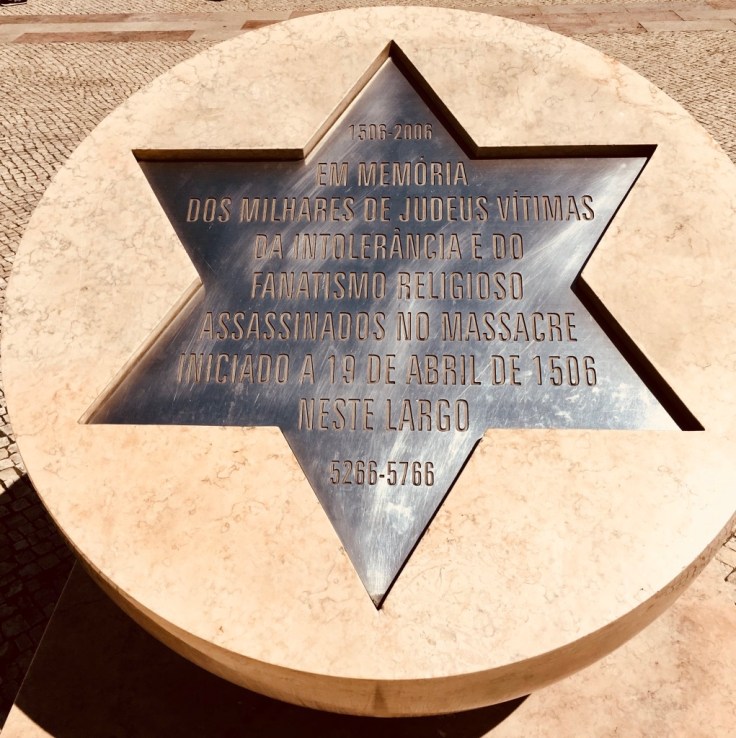
As the story goes, a number of those Catholics in attendance were, of course, erstwhile Jews who were swept up in the forced conversion of 1497. They apparently could not contain their disdain for the credulity of their neighbors, and they were overheard as they expressed their skepticism, claiming that it was merely a trick of the light. As news of the remarks of these New Christians spread, a rage took hold of the population, and converso-Jewish blood flowed in the streets for days until order could be restored.
This too is Portugal.
And, of course, it is marked with a plaque.
Conclusion
What an amazing experience this was! I had no idea that exploring the Douro River valley with Kosher Riverboat Cruises would be so fascinating from a historical perspective. I’m completely psyched for our next cruise: the Danube in October.
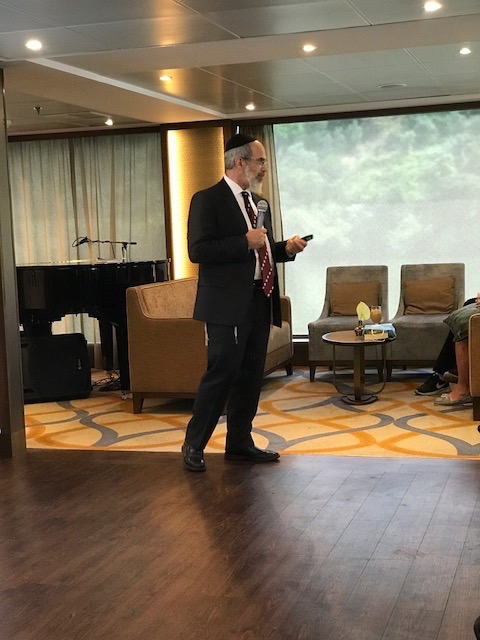
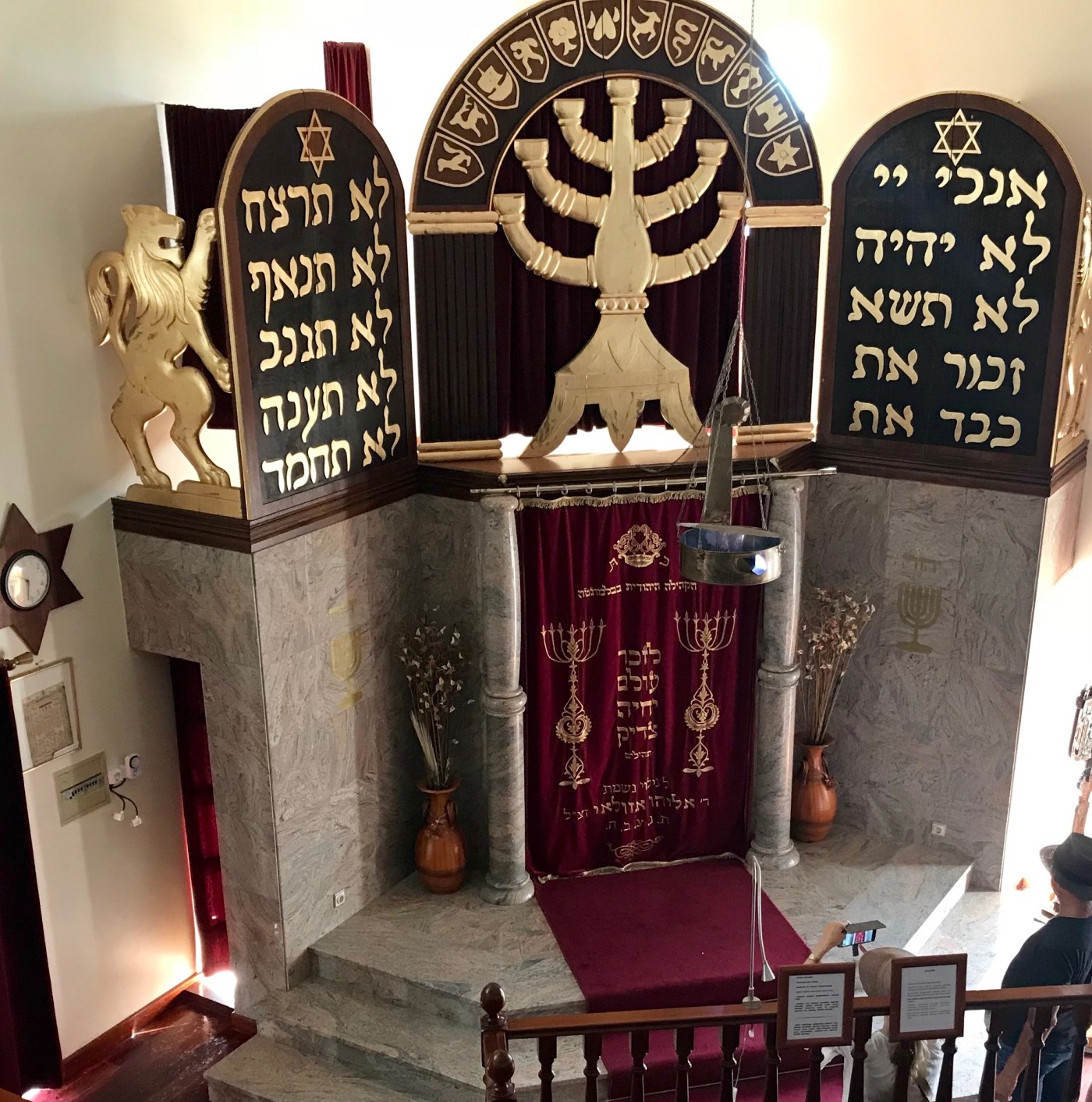

Your trip and descriptions are fabulous! A friend of mine recently sent me a link to the Smithsonian’s video on the Great Earthquake of Lisbon in 1755….PERFECT STORMS: G DS WRATH…they didn’t say much about Jews specifically, nor did they explain that the Marquis de Pombal was of Jewish descent…but it really awakened an interest in Portuguese Jewry… I enjoyed your information, shared here, immensely! Thank you!
Thanks! I’m glad you enjoyed the article. Portuguese Jewish history is fascinating!
This was very interesting thank you.
The timing of this article is so timely, we are visiting Portugal in October. I have arranged Jewish tours of Lisbon and Porto. Although I am a descendant of Eastern European Jews, I am fascinated by the history of the inquisition. Your article provides valuable information for our visit. Thank you for sharing!
Glad you found it useful! Travel safely.
Great vacation. Very interesting. ..but you forgot ‘Viseu’. Most of the textile shops were owned by Jewish descendants. You probably don’t know what an ‘ALHEIRA’is?
Your descriptions of your tour is superb. I felt that I was walking next to you. What is important is that we remember the people of the communities who lived in Portugal I have just returned from Barcelona and I remembered your talk on the Disputations. The peregrinations of the Jews from Spain to Portugal to Holland England and America is not forgotten. Each country benefitted from the Jewish presence. The Turks understood the importance of giving refuge to the Sephardic community.Your tour was greatly honored by having a tour guide of your intellectual erudition
Dear Dr. Abramson, I would dearly love to hear from you. I have a close personal connection to Portuguese Jewry and have visited the wonderful community of Porto a few times. We are going to Lisbon the week after succot.
Please contact me on the email provided.
Many thanks, g’mar hatima tova,
Adam Schogger
Hello Mr. Schogger—I don’t see your email, but you can write me at Henry.Abramson@touro.edu.
Portugal e’ linda! Portugal is beaultifull!
We went to Portugal in 2012 and had an uforgettable sojourn. We visited Belmonte due to my brazilian roots(Pedro Alvares Cabral’s birthplace) and had a tour of our Jewish Relics. We’ll be definitelly bck!